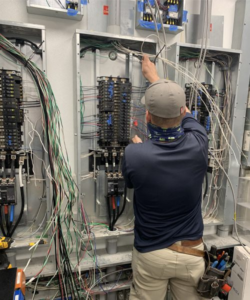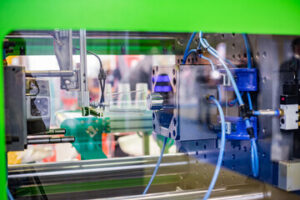Drywall Contractors Phoenix is responsible for ensuring the structural integrity of your walls and ceilings. They also help you customize your living space by adding textured finishes and intricate details.
Choosing a local contractor who prioritizes transparency in pricing is crucial to managing costs throughout your project. Look for drywall contractors who ask for payment upon delivery of materials and not before.

Drywall Contractors can work on residential or commercial projects, as well as new construction or renovations. Their expertise is vital in ensuring that walls are not only structurally sound, but look great as well. When vetting potential contractors, ask to see their portfolio. Reputable contractors will be proud to share their past successes and demonstrate the full scope of their capabilities.
Drywall contractors require strength to lift sheets, precision cuts to reduce waste and a keen eye for detail. They also work closely with other construction professionals to ensure a smooth workflow and coordinated installation of various systems within the walls. A strong attention to detail also means that drywall installers are careful to protect floors, carpets and other surfaces from damage as they work.
In order to become a drywall contractor, individuals must have a high school diploma or equivalent and complete a drywall or construction training program or apprenticeship. These programs offer classroom instruction and on-the-job experience in areas like blueprint reading, safety protocols and materials handling. Additional training in specialized areas such as acoustics and insulation can boost career opportunities.
Individuals seeking to become drywall contractors must also meet state licensing requirements, which vary by location. These typically include passing a background check, completing a certification exam and obtaining liability insurance and workers’ compensation insurance in the appropriate amounts.
Finally, a reputable contractor will be transparent about pricing throughout the project. They should not request a large portion of payment before materials are delivered to the job site, and they will be willing to discuss a clear breakdown of costs. This transparency allows clients to better manage their construction budget and mitigate any unexpected expenses down the road.
Licensing
Drywall contractors need a license to operate legally in the construction industry. This guarantees that they follow state guidelines regarding quality, safety, and insurance coverage. The licensing process includes a background check, past work experience, and passing an exam that tests both technical skills and knowledge of laws and business practices. It’s also essential for them to have a high credit score and take a financial responsibility course.
While it may seem like a hassle to go through this rigorous process, it’s not something to be taken lightly. It’s what separates the professionals from the amateurs and protects the consumer from scams and fraudulent contractors.
Licensing requires paying a fee and submitting an application form. This is followed by a thorough background check, fingerprinting, and an exam. Some states also require a financial responsibility bond or a letter of promise from a surety company in case the contractor fails to complete the job. This is a common precaution to prevent contractors from taking payment for materials and then disappearing.
Once a person has obtained their license, they’re free to pursue drywall projects of all sizes. They can use the skills learned from their training and experience to ensure walls and ceilings are finished to meet building standards and aesthetic requirements. While they may not paint these walls (that’s a C-33 Painter’s License), they can implement fire-rated systems and apply various texturing techniques to create a beautiful and functional interior space. Many military veterans have clear paths to licensure, as specific combinations of service time and work experience qualify them for this career path. Licensing isn’t just a requirement, it’s an indicator of integrity and reliability in an industry that thrives on those traits.
Insurance
Drywall contractors need insurance coverage to protect their business. General liability, commercial property and workers’ compensation are essential policies. A reputable independent agent can help you build a drywall contractor insurance portfolio to meet your specific needs.
Imagine you are working on a project and accidentally drop a metal stud. This could cause structural damage to your client’s property and leave you liable for medical expenses, lawyer fees and property repair. Without a general liability policy, these damages would be your responsibility. But with a drywall contractors insurance policy in place, you can avoid costly legal disputes and financial loss.
Drywall contractor insurance covers damage to third party properties, as well as personal injuries to your employees and customers. It’s also important to have a commercial umbrella policy, which is designed to cover anything that exceeds the limits of your underlying insurance policies. For example, if someone sues your business for more than your standard general liability limit, an umbrella policy can pay the difference to allow you to continue operating your business.
A comprehensive drywall contractor insurance portfolio can include commercial auto, inland marine and equipment and tool coverage. As a contractor, you likely rely on your vehicles to transport materials and tools from job to job. Commercial auto insurance provides protection if your company’s vehicles are involved in an accident, and it also offers protection if your tools and equipment are stolen from a vehicle.
If you use specialized tools and equipment, such as a drywall lift or power drills, an inland marine policy can offer coverage. This type of policy is often less expensive than commercial auto or property insurance. And it can be tailored to include coverage for your most valuable items.
Portfolio
A drywall contractor’s portfolio can tell you a lot about their skills and abilities. It should include before-and-after photos as well as records from previous projects. This can help you make a more informed decision about which contractor to choose for your project. It’s also a good idea to ask for references or check online reviews on third-party websites before choosing a contractor.
A quality drywall contractor will work closely with you to interpret blueprints and bring your vision to life. They’ll also be able to offer creative suggestions and solutions that will enhance your renovation’s aesthetic. In addition, a reputable drywall contractor will provide a clear timeline for your project and keep you updated throughout the process.
When evaluating potential contractors for large residential renovations, look for one who has a strong track record and a solid reputation in the community. They should be able to provide a detailed timeline for the work, maintain a clean workspace and communicate clearly with other members of the construction team.
Baker Triangle is a Union labor company with over nine locations in Texas and a diverse background of multi-family construction, hospitality, education, healthcare and commercial projects. They also offer a range of specialty services, including metal stud framing, prefabrication and plaster. The company has an average payment history and received a C payment score from Levelset. They’re an excellent choice for residential and commercial drywall jobs.
Communication
Choosing the right drywall contractor can be one of the most significant decisions you make during a renovation or construction project. You want to choose a contractor that is not only experienced, licensed and insured but who will also communicate clearly throughout the project and follow all applicable building codes. The right contractor can take your home improvement project from good to great, and you’ll have peace of mind knowing that it was done correctly and will last a long time.
When interviewing potential contractors, ask about their experience with projects similar to yours. It’s important to know that your contractor has the skills and resources to complete your project on time and within budget. Additionally, you’ll want to ensure that the contractor can accommodate any special requests or circumstances that may arise during the project.
Additionally, it’s important to discuss the specific materials and installation techniques that your contractor will use. For example, if you’re considering soundproofing or painting your new rooms, be sure to ask the contractor about their previous experiences with these types of projects and how they handled any challenges that may have arisen.
Finally, be sure to verify that your contractor will obtain all necessary permits for your project and will submit to required inspections. This will help to minimize any unforeseen expenses and will ensure that your construction is compliant with local building codes.
It’s important for a drywall contractor to be able to communicate with other contractors working on the same project, such as carpenters and electricians. This can be accomplished through a communication platform, such as Bridgit Bench, that allows for meeting notes and action items to be documented along with two-way email integration. This helps to avoid lost labor hours and keep projects on track.


